
How to Make Your Military Member Association Today’s Success Story
by 13077 LCol (Ret) Dean C. Black, CD, B.Sc., MA, CAE
Executive Director Air Force Association of Canada
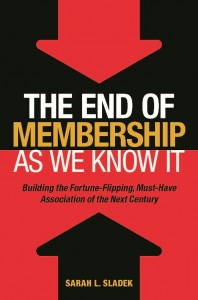 Sarah Sladek believes if your association has not resolved to dominate, then you should throw in the towel. In her book The End of Membership As We Know It: Building the Fortune-Flipping, Must-Have Association of the Next Century, she explains dominance is the only viable goal for today’s association. Providing undeniable value and minimizing competition are the keys to dominating in the association’s market. If this kind of approach sounds more appropriate for the for-profit corporation, such is the reality of the 21st century volunteer (non-profit) sector.
Sarah Sladek believes if your association has not resolved to dominate, then you should throw in the towel. In her book The End of Membership As We Know It: Building the Fortune-Flipping, Must-Have Association of the Next Century, she explains dominance is the only viable goal for today’s association. Providing undeniable value and minimizing competition are the keys to dominating in the association’s market. If this kind of approach sounds more appropriate for the for-profit corporation, such is the reality of the 21st century volunteer (non-profit) sector.
“Embrace change…”, she explains, “it is the only path to the future”. This might be a challenging message for military fraternal (common-interest) associations. Like all who don the uniform, soldiers, sailors and aviators tend to be conservative. But, we need to climb out of the association management rut we find ourselves in, and start dealing with change. This should not be the huge problem it seems; after all, the very creation of your member association was an act of change in and of itself. Sladek tells us that today three things are changing that affect membership: economic recession, demographic shifts, and technology. Membership-funded associations have to change in response, or die. How should your association respond? The answer can be found in Sladek’s analysis and in a plethora of titles released in recent times. Simply put, we need to create greater value for our members, and we need to recruit from younger generations. That technology thing is just a means to an end, but it’s really important to do something about it as well.
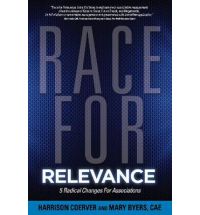 First, you need to offer better benefits. Sladek explains when it comes to benefits there are three types of associations: “Scrooge Associations”, “Milk Associations” and the “Antique Associations”. The “Scrooge” charge members a membership fee and also charge them for each individual service, product and program. There are not too many of these in our (military association) sector. The “Milk” association has lost touch with what it means to be an “exclusive” or “special” association. Take, for example, the Air Force Association of Canada. The magazine comes with membership, but if you just want the magazine you can buy it at your local bookstore for half the cost a member might pay. This is the kind of policy that makes you a “Milk” Association. As they say, “Why buy the whole cow (membership) when you can buy just a glass of milk (the magazine)”? The “Antique” association has been around a long time, but their brand and mission are no longer relevant; they have simply failed to adapt. Leadership in the “Antique” Association is the most entrenched, intransigent, collection of guardians and gatekeepers. Our military associations are probably a mix of the latter two.
First, you need to offer better benefits. Sladek explains when it comes to benefits there are three types of associations: “Scrooge Associations”, “Milk Associations” and the “Antique Associations”. The “Scrooge” charge members a membership fee and also charge them for each individual service, product and program. There are not too many of these in our (military association) sector. The “Milk” association has lost touch with what it means to be an “exclusive” or “special” association. Take, for example, the Air Force Association of Canada. The magazine comes with membership, but if you just want the magazine you can buy it at your local bookstore for half the cost a member might pay. This is the kind of policy that makes you a “Milk” Association. As they say, “Why buy the whole cow (membership) when you can buy just a glass of milk (the magazine)”? The “Antique” association has been around a long time, but their brand and mission are no longer relevant; they have simply failed to adapt. Leadership in the “Antique” Association is the most entrenched, intransigent, collection of guardians and gatekeepers. Our military associations are probably a mix of the latter two.
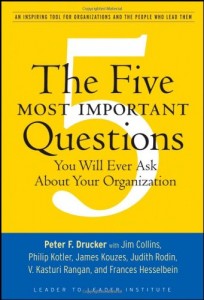 For Sladek, regardless of what type of association you belong to, the solutions are clear. A successful membership-benefits-formula is equally practical (solves the member’s problem) and emotional (fulfills the member’s need). Some of our military associations do well in these areas. The Military Police Association’s connection to and focus on blind children is a perfect example. If only all of the other associations could boast of similar goals, connections and attachments. Alas, today the under-45 crowd could not care less about your association’s history, insurance discounts, and annual conference. Promotion of these aspects is a waste of time and money. Younger members only care about opportunities to lead, opportunities to learn and opportunities to make a difference. Not surprisingly, that’s precisely what the older generation (us) wanted when they were young and interested in joining. When a member of Gen X or Gen Y scrutinizes your association they see people (us) who obviously get a lot out of their participation. But, they also conclude there is no room for them, and no chance to participate primarily because of a fierce resistance to change. Your leaders are too comfortable. Why change what they currently enjoy? I have heard too many stories describing how unwelcome they feel, or how much more they can get out of other affiliations.
For Sladek, regardless of what type of association you belong to, the solutions are clear. A successful membership-benefits-formula is equally practical (solves the member’s problem) and emotional (fulfills the member’s need). Some of our military associations do well in these areas. The Military Police Association’s connection to and focus on blind children is a perfect example. If only all of the other associations could boast of similar goals, connections and attachments. Alas, today the under-45 crowd could not care less about your association’s history, insurance discounts, and annual conference. Promotion of these aspects is a waste of time and money. Younger members only care about opportunities to lead, opportunities to learn and opportunities to make a difference. Not surprisingly, that’s precisely what the older generation (us) wanted when they were young and interested in joining. When a member of Gen X or Gen Y scrutinizes your association they see people (us) who obviously get a lot out of their participation. But, they also conclude there is no room for them, and no chance to participate primarily because of a fierce resistance to change. Your leaders are too comfortable. Why change what they currently enjoy? I have heard too many stories describing how unwelcome they feel, or how much more they can get out of other affiliations.
xxx
xxx
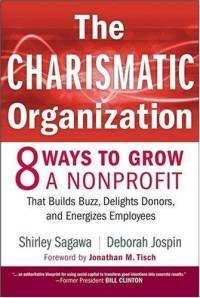 Sladek insists success will result only when we change the language we use to describe our benefits. Speak in terms of outcomes, she stresses. And, put aside the past. “Networking” is not a benefit, so stop referring to it as such. Besides, today’s younger generations can “network” all they want for free, on any of a number of social media (facebook, mySpace, Linkedin, Twitter, etc…) platforms. Instead, consider the following example: I have thought long and hard about why we do the things we do, in the Air Force Association of Canada. We produce the magazine, full of stories written by members who are themselves air force veterans and by others who have connected with air force veterans of all ages. We sell regalia members can wear, that also provide something with which they can either identify or can use to promote their identity. This aspect of identity and the sharing of stories are perfectly synonymous with the Canadian Society of Association Executives definition of the term association. “It is a venue or co-op within which members gather to share a common identity and their common experiences”. With all this in mind it would seem that the most important mission of a military-type association like ours is to nurture and cultivate the self-esteem of the veteran in such a way as to confirm or give meaning to their life-long passion for service in the service or trade or occupation they were involved. An outcome, therefore, could be “enhanced self-confidence through a stronger understanding of the context defining one’s military experiences”. If younger generations aren’t joining your association it has absolutely nothing to do with their immaturity and everything to do with your association’s inability to deliver value to them. Furthering your association’s reach involves only one thing: reaching younger generations. This only makes sense, when one considers the importance of targeting market needs. For the younger generation this will involve listening to them, creating solutions, encouraging feedback, being inclusive and targeting market potential. As Sladek likes to put it, “for decades and decades we have been selling pizza to members who just happen to love pizza”. New recruits want something else, but this does not mean we have to stop selling pizza. Targeting the market and market potential means making pizza, and serving up some new dish as well.
Sladek insists success will result only when we change the language we use to describe our benefits. Speak in terms of outcomes, she stresses. And, put aside the past. “Networking” is not a benefit, so stop referring to it as such. Besides, today’s younger generations can “network” all they want for free, on any of a number of social media (facebook, mySpace, Linkedin, Twitter, etc…) platforms. Instead, consider the following example: I have thought long and hard about why we do the things we do, in the Air Force Association of Canada. We produce the magazine, full of stories written by members who are themselves air force veterans and by others who have connected with air force veterans of all ages. We sell regalia members can wear, that also provide something with which they can either identify or can use to promote their identity. This aspect of identity and the sharing of stories are perfectly synonymous with the Canadian Society of Association Executives definition of the term association. “It is a venue or co-op within which members gather to share a common identity and their common experiences”. With all this in mind it would seem that the most important mission of a military-type association like ours is to nurture and cultivate the self-esteem of the veteran in such a way as to confirm or give meaning to their life-long passion for service in the service or trade or occupation they were involved. An outcome, therefore, could be “enhanced self-confidence through a stronger understanding of the context defining one’s military experiences”. If younger generations aren’t joining your association it has absolutely nothing to do with their immaturity and everything to do with your association’s inability to deliver value to them. Furthering your association’s reach involves only one thing: reaching younger generations. This only makes sense, when one considers the importance of targeting market needs. For the younger generation this will involve listening to them, creating solutions, encouraging feedback, being inclusive and targeting market potential. As Sladek likes to put it, “for decades and decades we have been selling pizza to members who just happen to love pizza”. New recruits want something else, but this does not mean we have to stop selling pizza. Targeting the market and market potential means making pizza, and serving up some new dish as well.
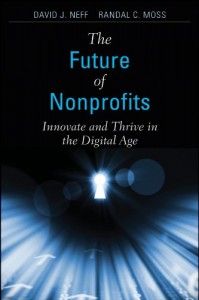 Sladek has been passionate about these challenges for some time. She points out that a host of conditions render most associations irrelevant today. Those associations whose leaders refuse to embrace change should be preparing their association’s obituary now. Based on demographics she predicts all of our fraternal-type associations will be extinct by 2020. We need to heed her advice, or at least give her membership benefits assessment system a try because the not-for-profit sector is a huge and important part of the Canadian economy. Its continued success enriches Canadian lives, gives meaning and purpose to many, and generates revenues and employment. Failure to nurture and cultivate a thriving voluntary sector is irresponsible and harmful to Canada’s well-being.
Sladek has been passionate about these challenges for some time. She points out that a host of conditions render most associations irrelevant today. Those associations whose leaders refuse to embrace change should be preparing their association’s obituary now. Based on demographics she predicts all of our fraternal-type associations will be extinct by 2020. We need to heed her advice, or at least give her membership benefits assessment system a try because the not-for-profit sector is a huge and important part of the Canadian economy. Its continued success enriches Canadian lives, gives meaning and purpose to many, and generates revenues and employment. Failure to nurture and cultivate a thriving voluntary sector is irresponsible and harmful to Canada’s well-being.
As I said, Sladek and her research is not alone. Many others carry similar messages. For example, in Race for Relevance: 5 Radical Changes for Associations, Harrison Coerver and Mary Byers skillfully discredit todays 100-year old association model, in favour of promoting change in the face of today’s challenges. Those challenges include: rapid advances in technology, higher member expectations, increased competition, and diverse member markets. Is it any wonder when younger generations see their elders doggedly hanging on to tradition-driven, slow-to-react, risk-averse association governance models that they simply turn away and never give the association a second glance? Coerver and Byers insist “the associations that will thrive…are those that will: overhaul their governance model and committee operations; empower the CEO and enhance staff expertise; rigorously define the member market; rationalize programs and services; and build a robust technology framework. Sladek’s thesis is thus aligned more with Coerver’s and Byers’ last three changes. Offering better benefits of more interest to younger generations and describing benefits in terms of outcomes can only come about with a better understanding of the market, which is precisely what Coerver and Byers are recommending we attain.
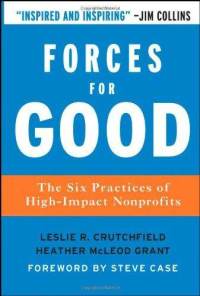 We should note, however, that these themes are not entirely new. Three years ago a number of knowledgeable authors published The Five Most Important Questions You Will Ever Ask About Your Organization. Those five questions just happen to consider the very context that underpins the invaluable work of Sladek, Coerver and Byers. For example, the first question asks “What is our Mission?” If we do not know why we are here, we cannot possibly articulate benefits in terms of outcomes. The fourth question: “What are our Results?” merely insists we must be able to measure those outcomes in understandable and meaningful ways. Before that happens we need to ask two important questions about our (members) customers: Who they are? and What do they value? The final question simply asks us about our plan. In summary, Peter Drucker et al help to concentrate our minds on our mission, our target audience and our approach. Sladek merely suggests in the face of demographic shifts we had better be focused on younger generations if we want to survive. Understanding who they are simply makes clear how important it is for us to speak in their language (explain benefits in terms of outcomes that resonate with them).
We should note, however, that these themes are not entirely new. Three years ago a number of knowledgeable authors published The Five Most Important Questions You Will Ever Ask About Your Organization. Those five questions just happen to consider the very context that underpins the invaluable work of Sladek, Coerver and Byers. For example, the first question asks “What is our Mission?” If we do not know why we are here, we cannot possibly articulate benefits in terms of outcomes. The fourth question: “What are our Results?” merely insists we must be able to measure those outcomes in understandable and meaningful ways. Before that happens we need to ask two important questions about our (members) customers: Who they are? and What do they value? The final question simply asks us about our plan. In summary, Peter Drucker et al help to concentrate our minds on our mission, our target audience and our approach. Sladek merely suggests in the face of demographic shifts we had better be focused on younger generations if we want to survive. Understanding who they are simply makes clear how important it is for us to speak in their language (explain benefits in terms of outcomes that resonate with them).
In The Charismatic Organization: 8 Ways to Grow a Nonprofit that Builds Buzz, Delights Donors, and Energizes Employees, Shirley Sagawa and Deborah Jospin cover a lot of ground. However, they do emphasize the importance of: meaningful involvement for members; having an active outreach program; a mission that motivates people; and, a “can-do” culture. In terms of Sladek’s thesis we are reminded how much younger generation members want to get involved. They want opportunities to lead, they want to learn and they want to make a difference. Give them a meaningful mission, and the chance to take on a project and you will be on the path to growth. Hold on to your traditions, your positions and your risk-aversions and you might as well throw in the towel. Finally, it is worth mentioning a book by Leslie R. Crutchfield and Heather Macleod Grant. In Forces for Good: The Six Practices of High-Impact Nonprofits, the authors extol the virtues of: harnessing market forces (understanding the needs and wants of member prospects); sharing leadership opportunities; adapting to change; seeking partnerships and alliances with competitors; and creating meaningful experiences for members such that you turn them into evangelists for your cause. For Crutchfield and Grant three factors are forcing these events: huge amounts of wealth transferring from the rich to the non-profit sector; political and economic challenges; and, without a doubt, technological innovations.
Sarah Sladek is an American citizen and association management and marketing specialist with strong interests in demographics. She is currently the CEO of XYZ University, a company that teaches organizations how to stay relevant, create strategies to give them a competitive advantage, and generate revenue for their long-term sustainability.

